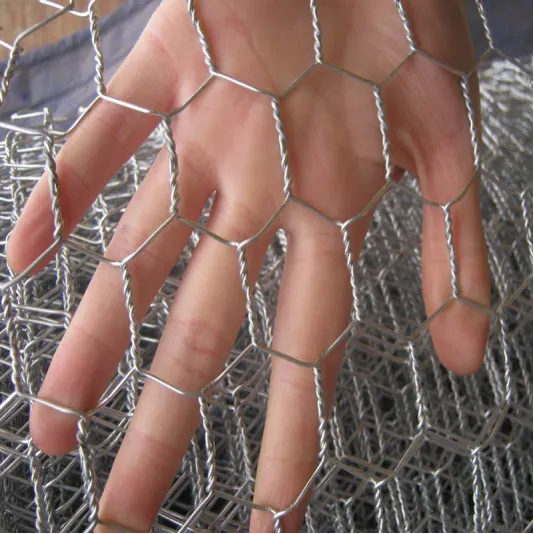-
+86 15030157877
-
sales@galvanizedmetalmesh.com
Dec . 10, 2024 23:47 Back to list
Cost Analysis of Barb Wire Suppliers in the Current Market
Understanding the Price of Barbed Wire from Suppliers
Barbed wire has served as an essential material in various applications, including agriculture, security fencing, and military uses. Suppliers play a critical role in providing this product, and understanding the factors that influence barbed wire pricing is beneficial for consumers, including farmers, security planners, and construction managers. This article explores the key elements that contribute to the price of barbed wire and how to select the right supplier.
Factors Influencing Barbed Wire Pricing
1. Raw Material Costs The primary component of barbed wire is steel, and fluctuations in steel prices significantly impact the cost of barbed wire. As global demand for steel increases and industries compete for limited resources, prices can vary substantially. Additionally, changes in the supply chain, such as tariffs on imported steel, can affect production costs for manufacturers.
2. Manufacturing Process The production of barbed wire involves specific manufacturing processes, including drawing, galvanizing, and spooling. Each step incurs labor, machinery, and overhead costs, which can vary between suppliers. Suppliers that employ more advanced or efficient production techniques may offer lower prices, benefiting consumers looking for cost-effective solutions.
3. Quality and Specifications Not all barbed wire is created equal. The size of the wire, gauge, and type of barbs can all influence pricing. Heavy-duty wires have a higher cost but provide greater strength and durability. Suppliers may charge premium prices for specialty products, such as high-tensile wire or coated wire, which offers improved resistance to rust and corrosion.
4. Geographical Location The location of both the supplier and the consumer can impact the price of barbed wire. Transportation costs add to the overall expense—local suppliers may offer more competitive prices due to reduced shipping fees, while those farther away might increase costs due to added logistics.
5. Market Demand Seasonal demand can also play a role in barbed wire pricing. For instance, during the spring and summer months, agricultural fencing needs often surge, leading to increased demand and potentially higher prices. Similarly, security concerns may drive up demand for fencing solutions, impacting prices during certain periods.
6. Supplier Reputation and Service Established suppliers may command higher prices due to their reputation for quality and service. Buyers might prefer these suppliers based on reliability, customer service, and warranty offerings. Additionally, some suppliers may provide technical support or consultation, which could justify higher costs.
price of barb wire supplier

How to Choose the Right Supplier
When searching for a supplier for barbed wire, consider the following steps
1. Research and Compare Prices Gather quotes from multiple suppliers to understand the market range for prices. Make sure to compare similar products with the same specifications to ensure you are making an informed decision.
2. Check Reviews and Testimonials Look for reviews and feedback from other customers to gauge the supplier’s reliability and product quality. A reputation for excellent service can be as important as pricing.
3. Evaluate Customer Service Engage with potential suppliers to assess their customer service. A supplier that is responsive and willing to provide additional information can enhance your purchasing experience.
4. Consider Bulk Purchasing If you require significant quantities of barbed wire, inquire about bulk purchasing options. Many suppliers offer discounts for larger orders, which can lead to considerable savings.
5. Look for Additional Services Some suppliers offer ancillary services like custom lengths or installation advice. If you require these services, it might be worth considering suppliers that can provide additional support.
Conclusion
The price of barbed wire from suppliers is influenced by various factors, including raw material costs, manufacturing processes, quality specifications, market demand, and geographical considerations. By understanding these elements and following a strategic approach to supplier selection, consumers can make informed decisions that balance quality and cost-effectiveness. Whether for agricultural use, security, or other applications, finding the right barbed wire supplier can lead to long-term satisfaction and investment value.
-
Premium Welded Gabion Mesh | Robust & Eco-Friendly
NewsJul.31,2025
-
Premium Eco-Friendly Roof Tiles | Affordable & Durable
NewsJul.31,2025
-
Premium Roof Tiles for Durable & Stylish Roofing Solutions
NewsJul.30,2025
-
High-Quality Roof Tiles for Durable & Stylish Roofing Solutions
NewsJul.29,2025
-
High Quality Square Wire Mesh Manufacturer & Supplier for Wholesale
NewsJul.29,2025
-
Premium Roof Tiles for Durable & Stylish Roofing Solutions
NewsJul.29,2025



